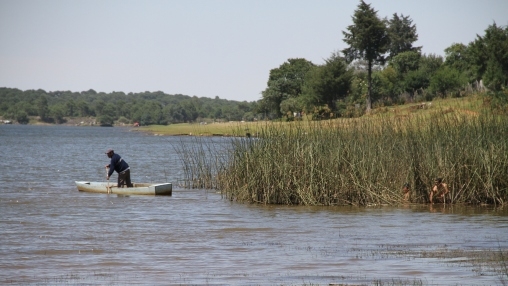As part of their joint effort to reduce the impact of the natural disasters, the Government of Mexico and the World Bank released a joint publication on “Improving the Assessment of Disaster Risks to Strengthen Financial Resilience”.
In this book – presented in the context of the G20 in Mexico- the importance of understanding risks and building risk financial strategies to protect citizens and reduce the impacts of natural disasters is underlined.
The publication shows what G20 member’s countries and guests such as Mexico, Turkey or Colombia, have done to manage disaster risk, and stresses that international partners and global cooperation play a major role in these issues.
"The report ‘Improving the Assessment of Disaster Risks to Strengthen Financial Resilience’ is the first deliverable under the G20 disaster risk management agenda," said Jose Antonio Meade, Finance Minister of Mexico.
It could happen to anyone
There is no economy that is immune when natural disasters strike. Mexico, for example, with five tectonic plates in its territory, is particularly exposed to earthquakes – there are more than 90 earthquakes a year with a magnitude of more than 4.0 on the Richter scale, according to the Mexican chapter in the publication.
And this month is the start of the hurricane season in the Gulf of Mexico and the Caribbean, another major risk factor for the country.
Natural disasters not only cause physical or human losses – they also affect the economy and hinder growth. In Mexico, the 1985 earthquake caused 6,000 deaths and the losses were estimated at 11.4 billion dollars, according to the publication.
The situation forced the government in 1985 to use its resources for reconstruction efforts, instead of, for example, expanding the country’s infrastructure. It was the event with the biggest economic loss between 1970 and 2010, followed by Hurricane Wilma in 2005 and Hurricane Alex in 2010.
Shortly after the quake, Mexico created its disaster risk management system. In the 1990s, the government initiated a natural disasters Fund, FONDEN, that is especially meant for disaster relief and reconstruction.
In 2006, Mexico became the first sovereign country to issue a catastrophe bond for earthquake risks – a risk transfer instrument that shares the financial risk of a major earthquake with international markets.
Mexico and its “impressive” database
And through FONDEN, Mexico has an “impressive” database and visualization tool to map out the risks in the country, according to Hector Ibarra Pando, World Bank Senior Financial Officer. It shows current data and values on what public infrastructure could be impacted by a natural disaster.
“This database is unique in the world,” says Hector Ibarra Pando, “ and it is a topic that the World Bank is trying to boost on an international level, that the governments have the capacity to quantify the exposures at a fiscal level in matters of public infrastructure.”

